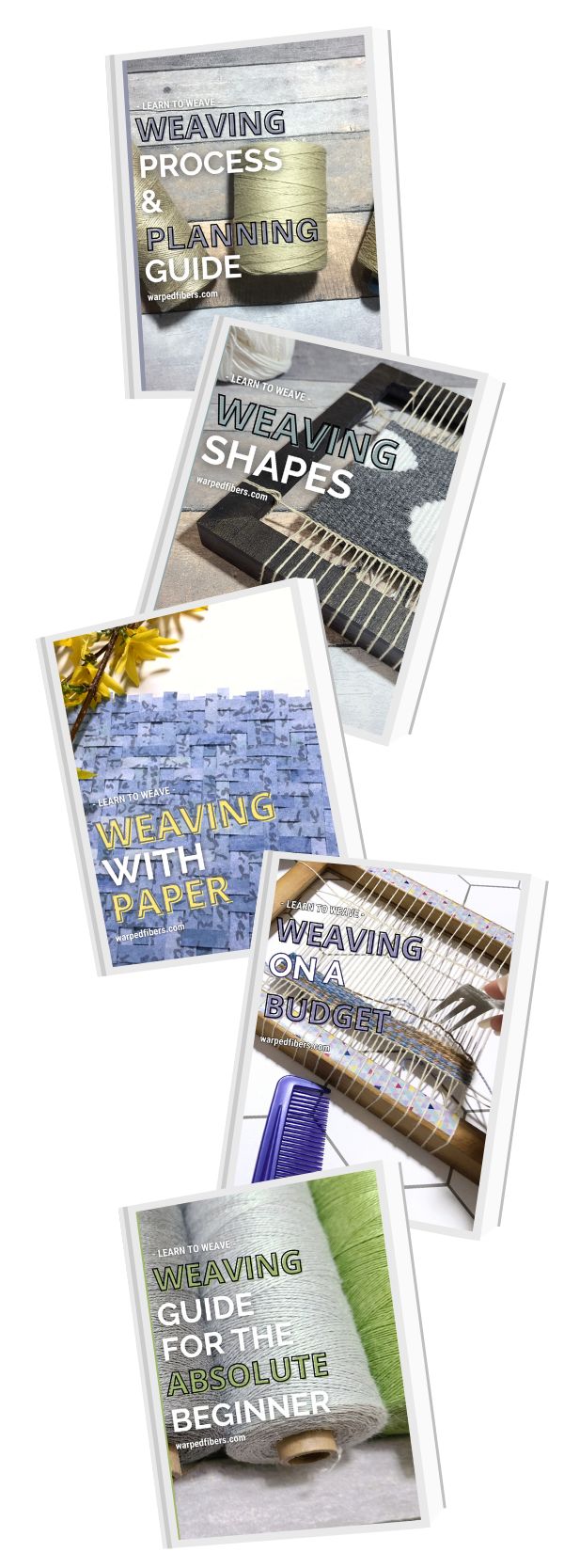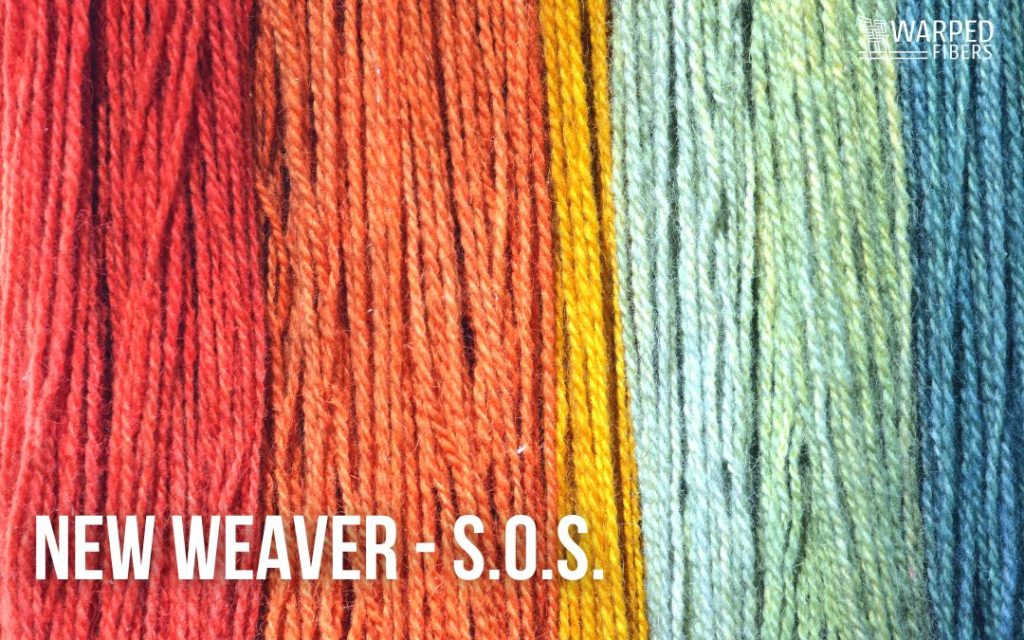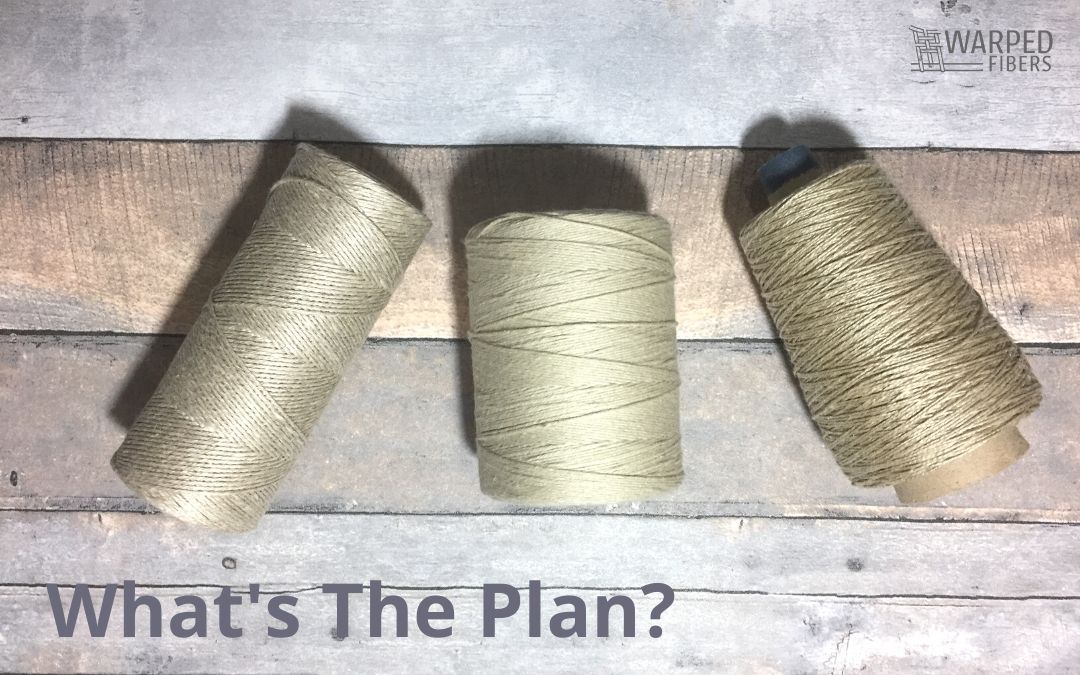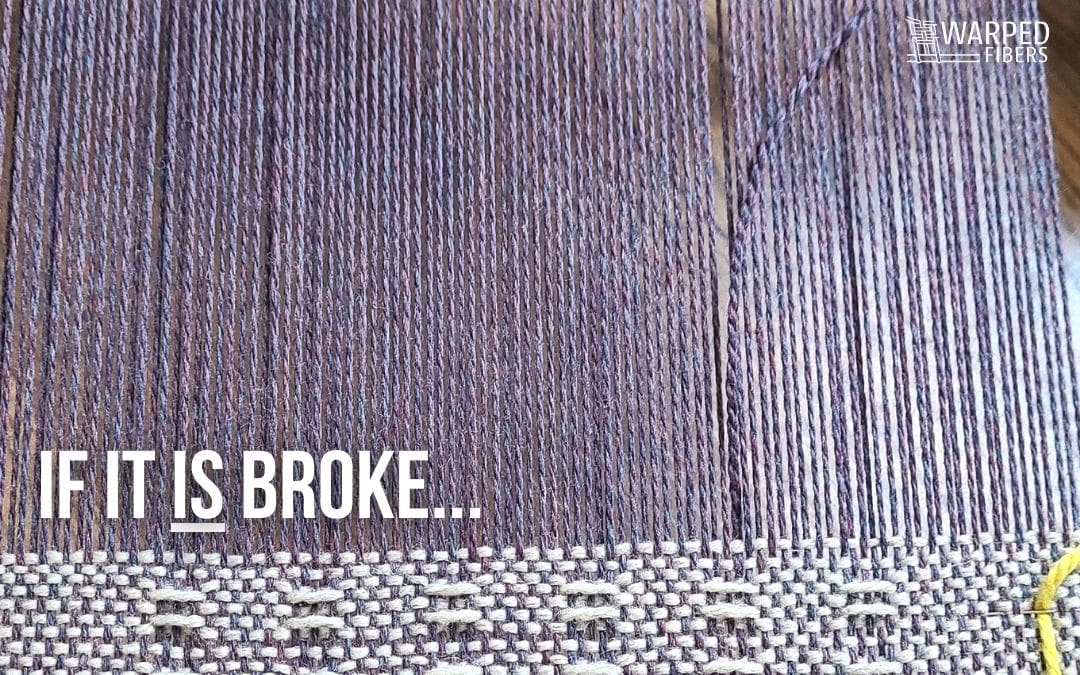Plain weave is one of the most versatile weave structures that you will find. I have talked about it many times so if you want to learn some more about plain weave then make sure to check out these other posts:
So it is pretty easy to see that plain weave does not mean plain weaving!
Another example of that is crammed and spaced. While this technique does not need to be done in plain weave (it works in twills and other patterns as well), it can add a fun twist to your simple weaving.
This page may contain affiliate links. If you purchase something through these links then I will receive a small commission – at no extra cost to you! Please read our DISCLAIMER for more info. Thanks for the support!
What is the crammed and spaced technique?
Crammed and spaced is a technique that uses different EPI’s in the same weaving. (Brush up on your EPI knowledge)
Unlike when your EPI changes due to not paying attention (been there!), crammed and spaced is an intentional technique that utilizes the different spaces to make a dynamic weaving.
This does not mean that you are intentionally pulling in in certain areas, instead, you are either leaving dents in your reed empty or you are using a special type of rigid heddle that does the spacing for you. Either way, the technique creates areas with a lot of warp and areas with little.
In the example above, the crammed and spaced technique creates an undulating movement across the scarf. The twill pattern exaggerates this movement.
On a floor loom
Regardless of the reed that you are using, weaving crammed and spaced is as simple as warping a loom regularly.
The only real difference is that you will have some dents with more than one warp in them and some dents with none!
Even though it may seem difficult at first to choose the “right warp” in each dent to go next when you are threading your heddles, it does not really matter. Make your best guess, but it will end up warping up correctly either way. That is one reason why it is important to shake out your warp as you are winding it onto your back beam.
I recommend creating a diagram when planning your crammed and spaced weaving so that you can space it out evenly (assuming that is what you are going for.) This will also make the sleying of your reed easier so you do not have to think about it too hard while you are doing it.
If you can do all of the thinking beforehand then you can relax a little more and get lost in the warping process.
On a rigid heddle loom
If you have a rigid heddle loom, then you can sometimes get a variable dent heddle that will do all the spacing for you! Both Schacht and Ashford have these types of heddles that you can purchase.
The heddles are really great because they have multiple options depending on the type of spacing you are wanting to do.
The heddle that I have for my Schacht Flip Folding Rigid Heddle Loom (review of my flip loom here) has 4 x 5 Dent Sections, 4 x 8 Dent Sections, 3 x 10 Dent Sections, and 3 x 12 Dent Sections. These can be taken off and arranged any way that you want to create a crammed and spaced weaving.
You can get the Schacht variable dent rigid heddle here!
The Schacht variable dent heddle also has the option to purchase extra sections. If you are looking for something specific that you can not make with the sections it comes with you can purchase them separately as needed. This means you also have the option of getting enough sections to create a whole new full heddle without actually purchasing a whole new heddle.
Warping your variable dent rigid heddle is exactly the same as any other heddle you use. The only thing that changes is the end result!
If you are creating a narrow weaving then you have the option of only using the heddle pieces that create the width you are going for. When choosing this option, your heddle comes with little bands that go around the top to keep them in place. This is necessary so that they do not move around while you are warping and weaving. You can see these at the top of the heddle in the image above.
Choosing to do this or putting sections on your heddle and just not using them is a purely personal preference.
Create ridges (crammed warps in the same heddle)
Generally speaking, crammed and spaced weaving has all of the warps weaving as individuals despite the fact that some of them are very close together.
Another option is to double up and cram a few warps here and there and have them act as one. These double warps would also go through the same heddle so that they raise and lower together. This will give you thicker warp areas to add vertical ridges to your weaving.
This is probably the simplest way to use this technique even if it is not the most traditional.
You can get this same effect by just using a thicker warp in certain areas, but that may not be ideal if you do not have a suitable warp to use! Just make sure to keep the double warps in mind when you are planning your weaving so that you have enough yarn to create your warp.
Learn how to plan your weaving project!
What to watch out for
Unfortunately, it is easy to just create a weft-faced weaving using this technique since you are using more than one warp sett! A weft-faced weaving will barely show off the crammed and spaced effect that you are going for, therefore making it basically obsolete.
In order to avoid this, you will want to make sure that your highest EPI allows for a balanced weave. You can always check this by using your EPI mini-loom to check what warp sett your yarn needs to do this. As long as one of the warp spacing options you choose creates a balanced weave it will accentuate the different spacing areas.
The image above shows a weaving that just barely allows for the crammed and spaced technique to show through. While that is not a bad-looking option, you may want to make sure you get a little more bang for your weft!
What to make with the crammed and spaced technique
If you are wondering what you can do with this technique then I highly recommend creating a scarf, shawl, or anything that you want to wear and dress up a little. If the warp setts and weft choice is right then it can create a lace-like appearance in your weaving.
This makes it perfect for use on anything that you want to be dressy.
While this technique is relatively stable, it is still best to not use it for anything that will be actively used. This means that it is not ideal for things like towels because the crammed and spaced yarns could start to even out. It also will not make a very absorbent material so you would not want to do that anyway!
Make sure to wash your weaving gently before using it to allow the fibers to bloom. If you are weaving with a protein fiber that can felt then doing this could also further secure your yarns in their place.
Let me know if you try out the crammed and spaced technique! Tag @cole.bun on Instagram.
⇣ Love It? Share It! ⇣
You May Also Like























